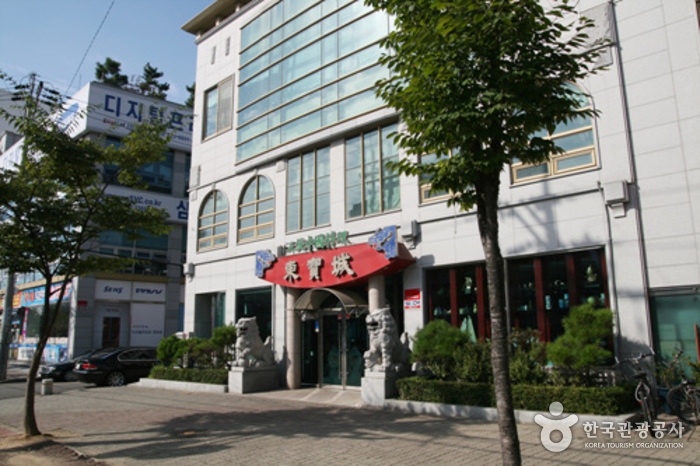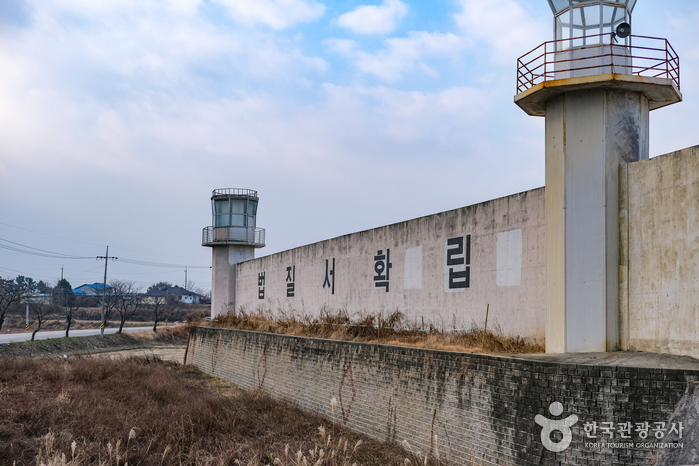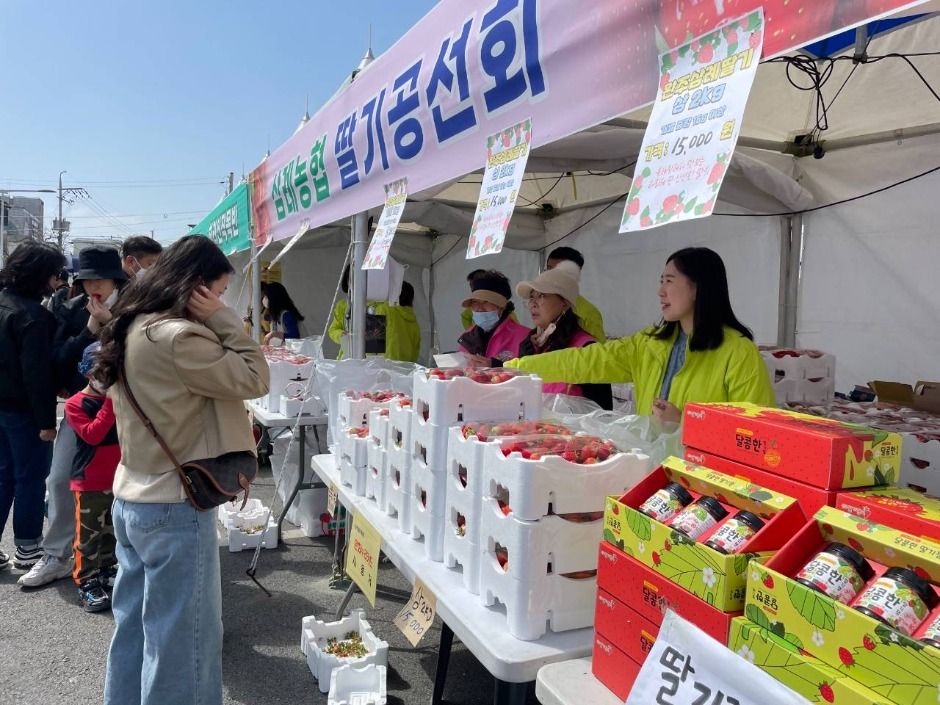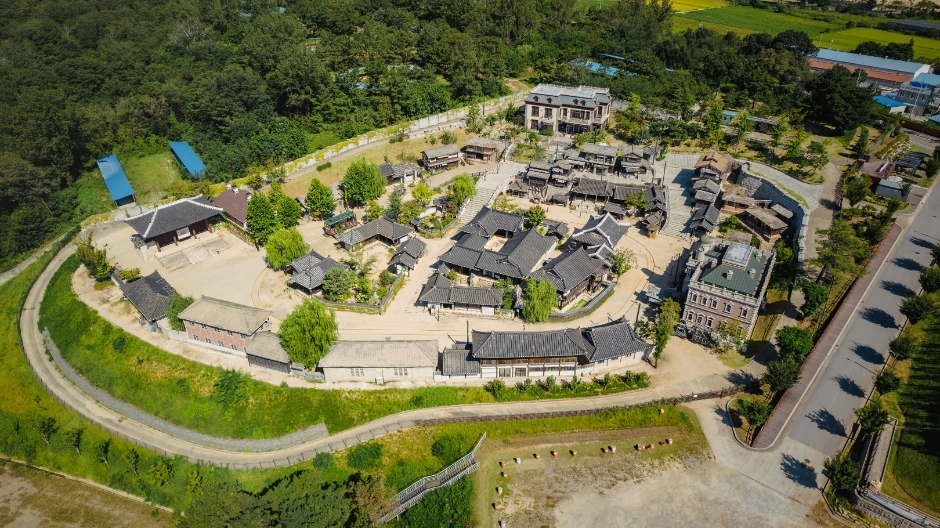Archaeological Site in Wanggung-ri [UNESCO World Heritage] (익산 왕궁리유적 [유네스코 세계문화유산])
5.0Km 2024-04-07
666, Gungseong-ro, Iksan-si, Jeonbuk-do
+82-63-859-4631
Archaeological Site in Wanggung-ri, designated as Historic Site No. 408 on September 17, 1998, has a surface area of 216,862 square meters. The site has various structures and artifacts from Baekje dynasty to unified Silla period. Artifacts were found within the rectangular-shaped fortress site that surrounds Wanggungri Five-story Stone Pagoda, National Treasure No. 289.
Wanggung Dawon (왕궁다원)
6.6Km 2024-04-07
21-5 Sagok-gil, Wanggung-myeon, Iksan-si, Jeonbuk-do
Wanggung Dawon is a hanok café built in the 1800s. It was once the residence of Song Byungwoo, a rich person in the region, and has been operating as a traditional tea house since 2008, preserving the charm of the old hanok. The café offers a wide variety of teas, with the signature menu item being ssanghwatang (herbal tonic tea), a traditional Korean beverage. Ssanghwatang is made with ingredients such as jujube, ginseng, and chestnuts, known for its warming properties.
Dongboseong (동보성)
7.2Km 2024-04-07
437, Hana-ro, Iksan-si, Jeonbuk-do
Dongboseong is an authentic Chinese restaurant serving dishes prepared by a number of chefs from China. It has separate rooms and large banquet rooms for group dining.
Iksan Ten Million Chrysanthemum Festival (익산천만송이국화축제)
7.9Km 2024-10-08
322 Hana-ro, Iksan-si, Jeonbuk-do
+82-63-859-4977
The Iksan Ten Million Chrysanthemum Festival is held every year from late October to early November. The festival features an outdoor chrysanthemum exhibit, city agricultural hall, cultural performances, music fountain and much more as well as food.
Iksan Prison Set (익산교도소세트장)
10.8Km 2024-11-05
207 Hamnang-ro, Seongdang-myeon, Iksan-si, Jeollabuk-do
It is the only prison set in Korea made for movie filming. Dramas like "Delightfully Deceitful" and " Divorce Attorney Shin" and movies like "Tazza" and "Miracle in Cell No. 7" were filmed here. Although the set was built using a closed school, shooting photos in places like the court, solitary confinement, interrogation rooms, and torture chambers can feel eerie. Renting costumes and becoming a correctional officer or inmate provides a more realistic prison experience.
Wanju Samrye Strawberry Festival (완주삼례딸기대축제)
11.8Km 2025-03-07
42 Donghak-ro, Samnye-eup, Wanju-gun, Jeonbuk-do
Samrye Nonghyup: +82-63-291-2711 Wanju Foundation for Arts & Culture: +82-63-262-3955
The Wanju Samrye Strawberry Festival offers visitors fresh and delicious strawberries, lively performances, engaging events, and various hands-on experience programs. The festival is a great opportunity to create unforgettable memories with friends, families, and loved ones.
Sunshine Studio (논산 선샤인스튜디오)
12.1Km 2024-11-04
90 Bonghwang-ro, Yeonmu-eup, Nonsan-si, Chungcheongnam-do
Originally established as the set for the drama "Mr. Sunshine", it has since garnered interest as a filming location for historical dramas such as "Pachinko" and "Tale of the Nine Tailed 1938". It is currently open to the public as a tourist attraction. Strolling through Sunshine Studio in costumes of the era, one feels as if they've stepped into the bustling Hanseong of the 1900s.
Wanju Samrye Culture & Arts Village (완주 삼례문화예술촌)
12.2Km 2024-04-07
81-13, Samnyeyeok-ro, Wanju-gun, Jeonbuk-do
+82-63-290-3862
Samrye Culture & Arts Village is an art village also referred to as "Samsamyeyemimi." Once used as a granary and an official residence during the Japanese administration, it has now become a village of art. The village consists of Design Museum, Visual Media Art Gallery, Kim Sang-rym Carpentry Shop (Wood Works), and Book Museum and offers a variety of programs during exhibition events and art festivals.
Sunshine Land (선샤인랜드)
12.3Km 2024-07-09
102 Bonghwang-ro, Yeonmu-eup, Nonsan-si, Chungcheongnam-do
Sunshine Land is a cultural complex located in Nonsan, Chungcheongnam-do. One can experience and observe diverse content at this themed attraction, which is divided into four sections: Survival Experience Center, Military Experience Center, Sunshine Studio, and 1950 Studio. The Survival Experience Center and Military Experience Center incorporate VR technology for an interactive and realistic entertainment. The Sunshine Studo and 1950 Studio are decorated in the theme of the aftermath of the Korean War, allowing one to get a glimpse and knowledge of what life in Korea was like after the war.
Iksan Sungnimsa Temple (숭림사(익산))
12.7Km 2024-04-07
495-57, Baekje-ro, Iksan-si, Jeonbuk-do
+82-53-862-6394
Sungnimsa Temple is one of the major temples in Iksan under Geumsansa Temple and was believed by some to have been built by monk Jinpyo Yulsa during the reign of King Gyeongdeok (742-764) during the Silla period. Others believe that the temple was established during the first year of King Chungmok of the Goryeo dynasty in 1345. Sungnimsa Temple was named in honor of great monk Bodhi-Dharma, who practiced seated Zen meditation for nine years at Sorimsa Temple located deep inside Sungsan Mountain in China. The temple was burnt down during the Imjin War (1592-1598), leaving only Bogwangjeon Hall. Bits and pieces of the temple were later restored in 1697, 1819, and 1892.
![Archaeological Site in Wanggung-ri [UNESCO World Heritage] (익산 왕궁리유적 [유네스코 세계문화유산])](http://tong.visitkorea.or.kr/cms/resource/97/2514197_image2_1.jpg)





 English
English
 한국어
한국어 日本語
日本語 中文(简体)
中文(简体) Deutsch
Deutsch Français
Français Español
Español Русский
Русский